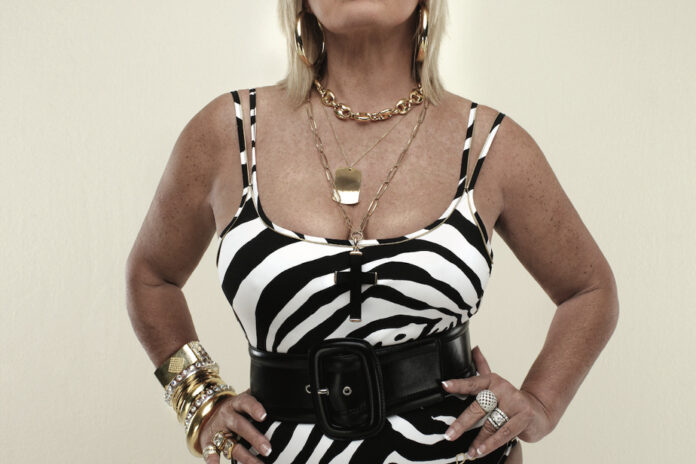Cardinal Editions are hitting hard these days, with Urbania 20, a beautiful book of more than 300 pages retracing the genesis of the media to its multiple entities today, including a number of portraits that have caused so much talk, and what can I say of these front pages (Gérald Tremblay, Michèle Richard, Richard Martineau, and of course all those penises, do you remember?) who shook the media universe and above all sold many copies.
Fans of the paper magazine (which went digital in 2020) will be served here, with a quantity of extracts of transcribed texts, anecdotes behind several photos, interviews and other reports, not to mention several juicy gossips (we won’t reveal everything, but just for the photo of Arnaud Soly in bed, let’s say that it’s really worth it, the reminder of the special issue “Ethnies” a little less…). In 20 years, some things age better than others, and it seems…
Tatiana Polevoy worked on the case for a year, interviewing more than 80 people, having worked closely or very far with Urbania, from its founders (Philippe Lamarre and Vianney Tremblay, two primary school friends!) to its most loyal but not less critical observers, including many collaborators (editors, photographers, illustrators). Here she offers a finished product in the vein of her original, in substance, but above all in form, in terms of graphics, visuals, even tone, a bit “sloppy”, by her own admission.
The journalist, columnist and now author has given herself the mandate not to be complacent, to offer a “critical look at a singular object”. And that’s exactly what it does – and we understand between the branches that it hasn’t only made people happy, that’s certainly part of the game -, following its founder Philippe Lamarre from start to finish to understand: “Specifically, what did you mean? »
“I’ve always been fascinated by Urbania,” she explains. I had lots of prejudices about this media and cultural object. » Like many outside readers no doubt: “I saw a gang of people who make each other laugh and think they’re cool, and I always asked myself the question: are they laughing at the world, or are they laughing with the world? »
An answer that the reader will undoubtedly make for himself while leafing through this voluminous work, which she skilfully summarizes: “I did not come to the conclusion that they did not think they were so cool, or that they did not laugh of the world, she said, but I came to conclude that at the end of the media spectrum, it was done in a good-natured way, with a lot of chance, often… after 43 beers and too much Red Bull! »
The little stories behind the big headlines say a lot. We learn in particular that the photo of Gérald Tremblay’s armpits was a montage, and that Passe-Montagne never gave its consent to the publication of Passe-Carreau’s kiss. The photo, moreover, was not the result of much thought at all, but rather of complete chance.
No doubt we have attributed too many intentions to Urbania, we say in the light of all these memories, which illustrate to what extent the container was able to take over the content.
Looking back, Tatiana Polevoy even wonders if her famous question to Philippe Lamarre was ultimately the right one. Instead of trying to “say something”, perhaps the founder has been trying for 20 years to “do something”? she suggests. “I think they’re trying to be disruptive. And the Duhaime affair is the culmination of all that…”
One of the media’s less good moves is this, to say the least, controversial passage by the now leader of the Conservative Party of Quebec as a columnist, whose book tells here the ins and outs (basically: a chance meeting, a good joint, an invitation to chronicle on a whim, and the “internal crisis” that followed). A case which allowed us to test the limits of Urbania, certainly, but not only that.
Speaking of limits, is Urbania really still pushing them today? What remains of the slobbering media of yesterday, which seemed to be afraid of nothing? Many people are asking the question, including former editor-in-chief Catherine Perreault-Lessard, quoted in the book: “Urbania’s biggest fault is that it has become woke. » Has the beast (remember that the symbol of the magazine is a dog, as the cover nicely reminds us) actually calmed down? Tatiana Polevoy does not see the matter from this angle: “I wouldn’t say that Urbania has calmed down,” she adds. It’s more that we talk about kindness today, but this concept was not fashionable 20 years ago. 20 years ago it was all about the gag. »
This is no longer the case today. Let’s just say we don’t laugh at everything like that anymore. “We are more aware of people. » And today’s young employees demonstrate this well. “I would say it’s more society that has changed… than Urbania! »















